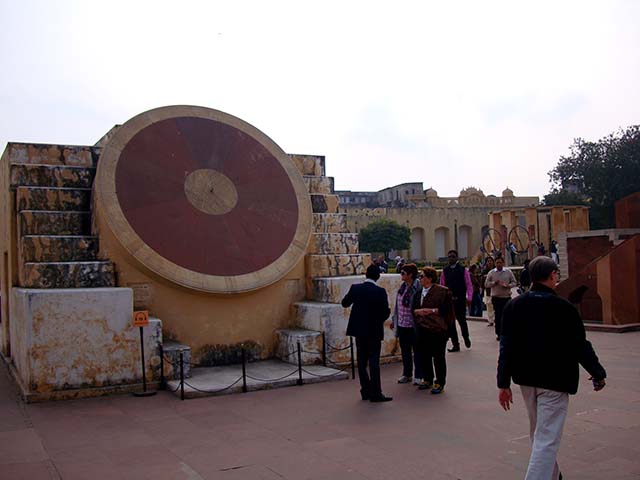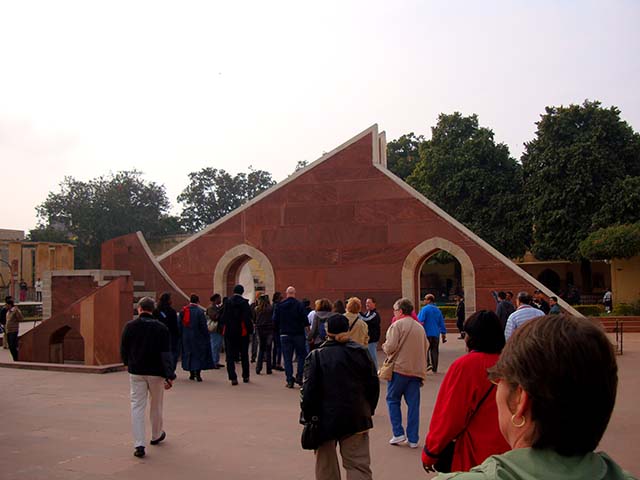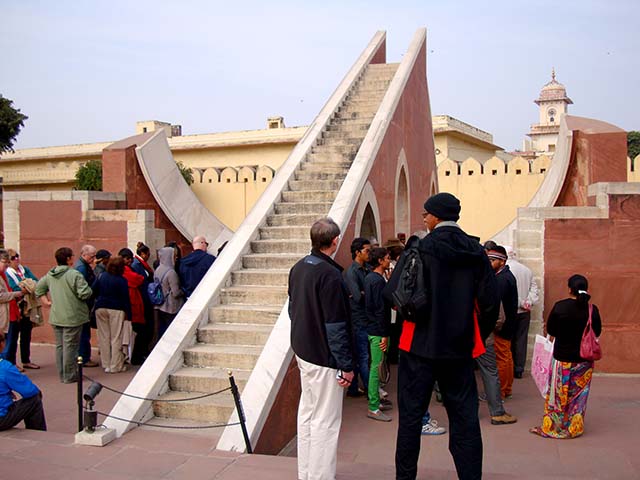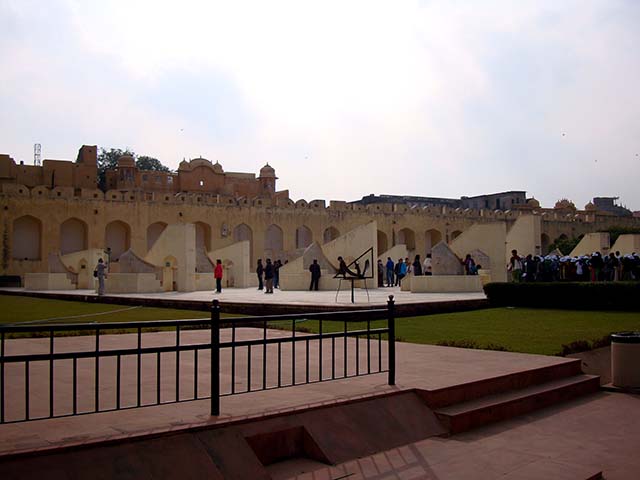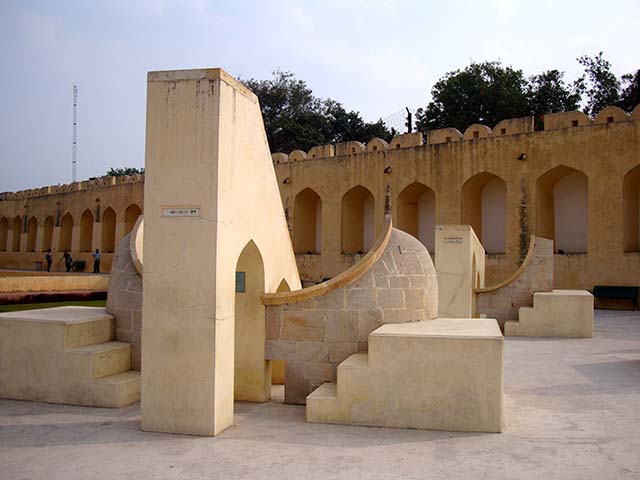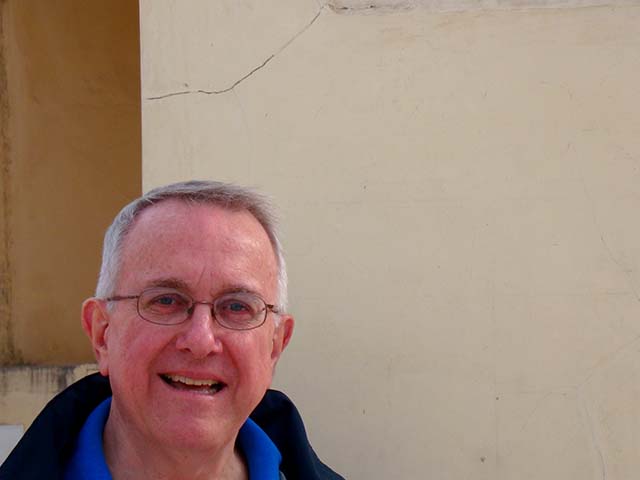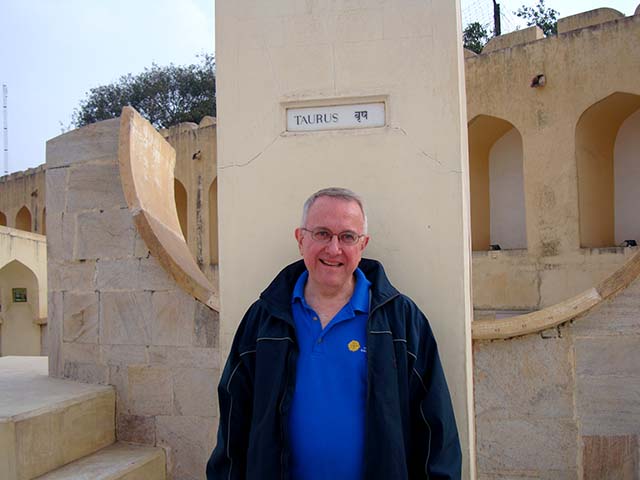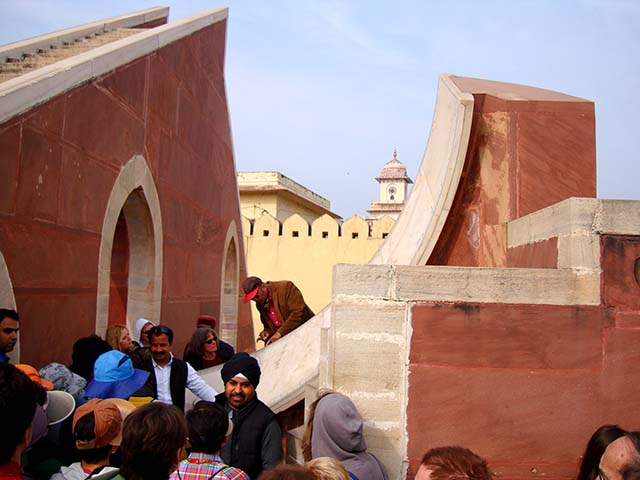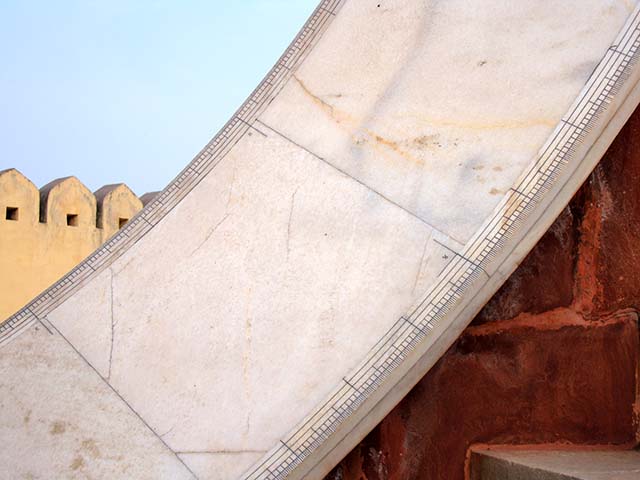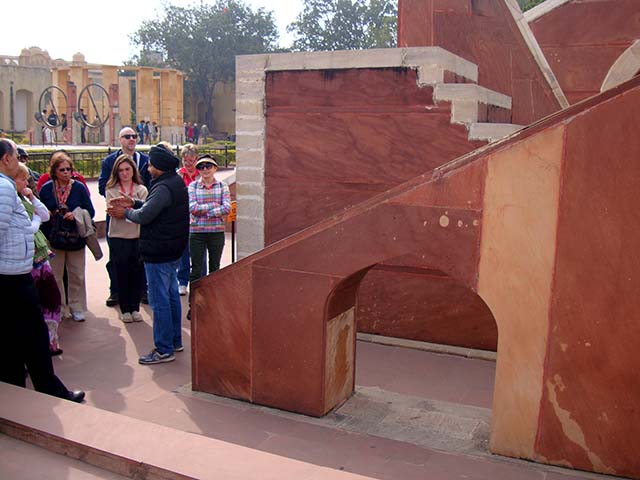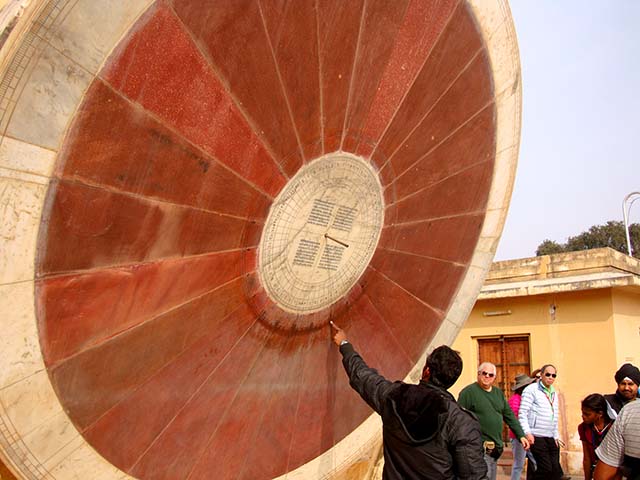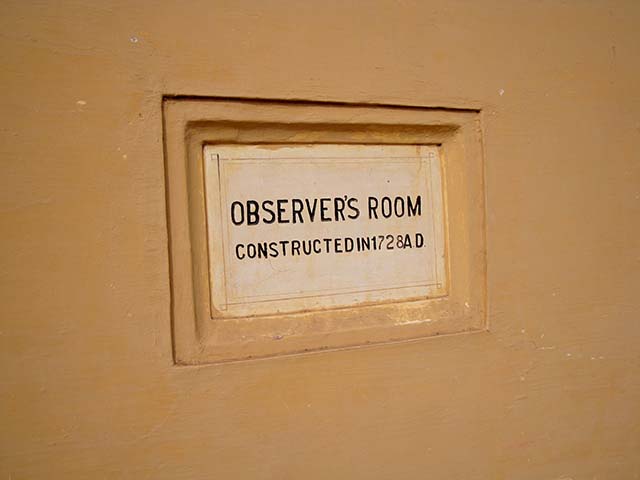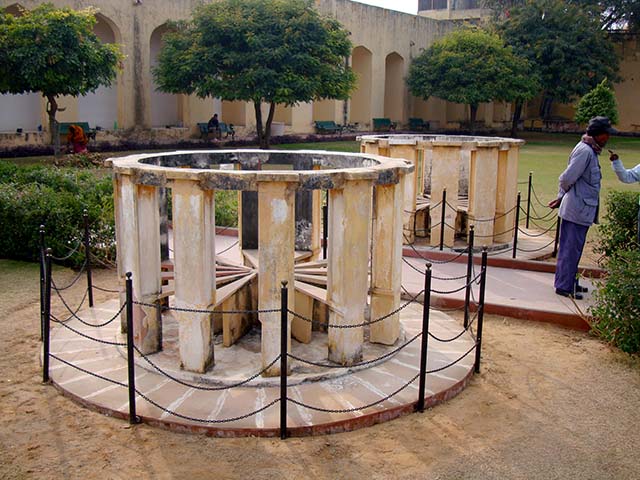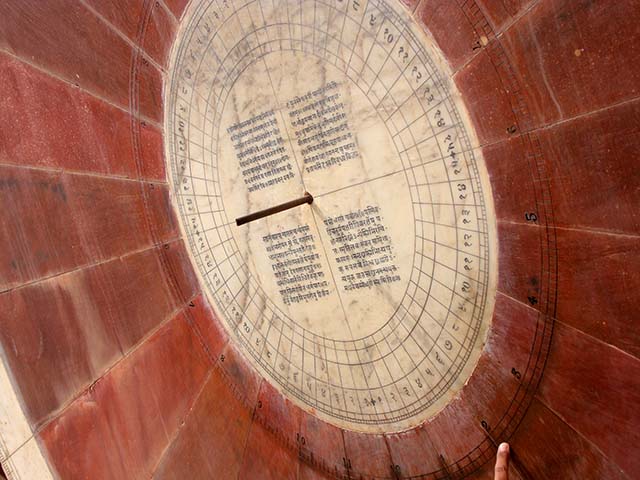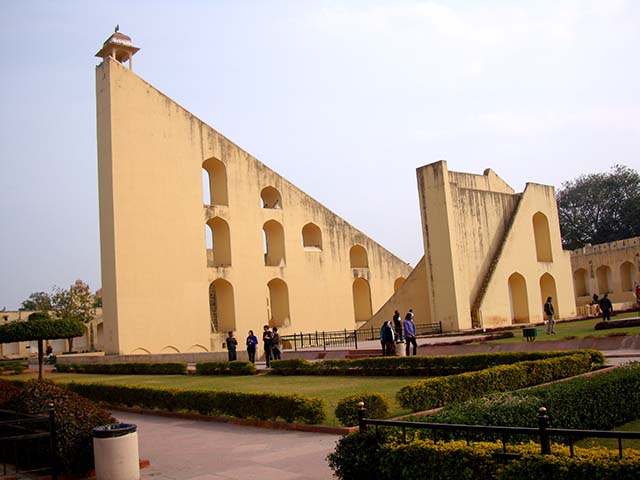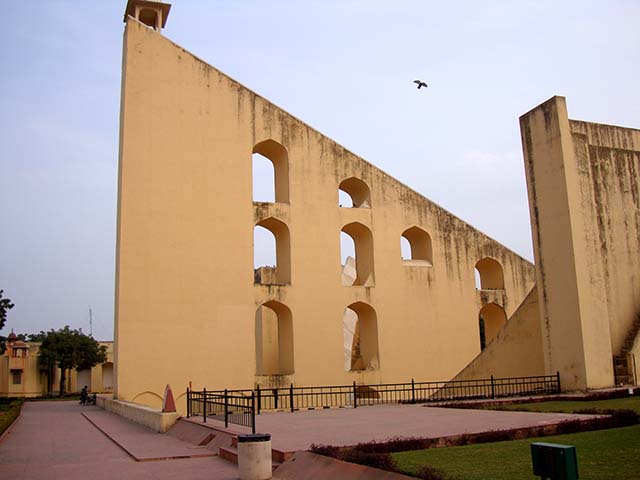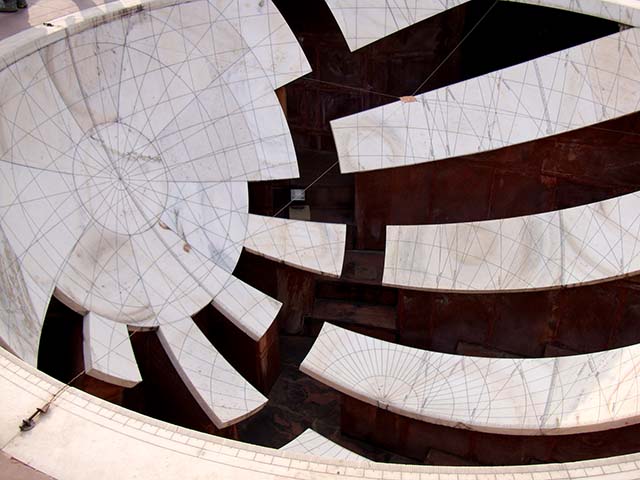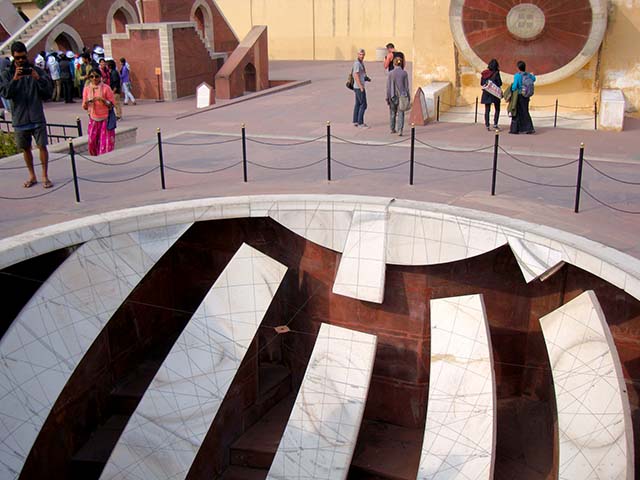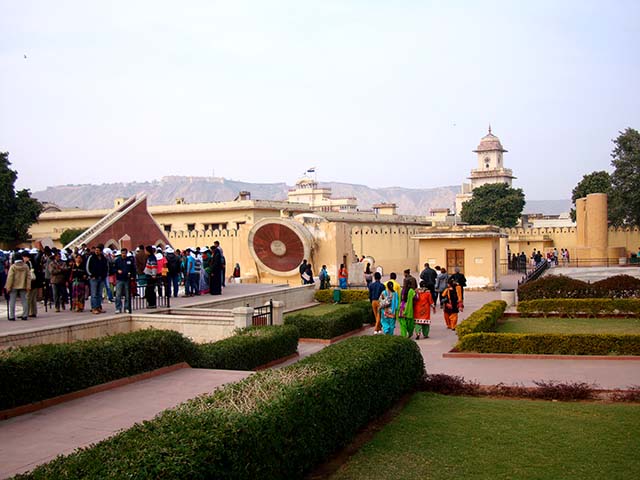From Wikipedia: The Jantar Mantar is a collection of architectural astronomical instruments, built in Jaipur by Sawai Jai Singh between 1727 and 1734.
This is a picture I grabbed from the internet as they wouldn't let us climb to the top of the big sundial to get a shot like this. Again, from Wikipedia: Sawai Jai Singh constructed a total of five such facilities at different locations in India. The Jaipur observatory is the largest and best preserved of these. It has been inscribed on the World Heritage List as "an expression of the astronomical skills and cosmological concepts of the court of a scholarly prince at the end of the Mughal period". The name is derived from jantar ("instrument"), and mantar ("formula", or in this context "calculation"). Therefore jantar mantar means literally 'calculation instrument'.
This sundial is called the Nadivalya yantra.
And this one is the Laghu samrat yantra.
Built from local stone and marble, each instrument carries an astronomical scale, generally marked on the marble inner lining. Bronze tablets, all extraordinarily accurate, were also employed. Thoroughly restored in 1901, the Jantar Mantar was declared a national monument in 1948.
Don and Michael try to figure it all out.
A bunch of little sundials are over there.
Every one pointed in a different direction.
Some pointed high, some pointed low.
What's it all about?
Bill has it figured out.
Each one is pointed at a constellation, each one representing a sign of the Zodiac.
So Bill poses by his.
Meanwhile, Davinder is maneuvering his group up to one of the sundials for an explanation.
Quick, hurry! The sun has popped out just enough to create a genuine shadow!
Well, it was there a second ago.
Not to worry -- Davinder has things under control as usual.
Nice, but it's easier just to check your wristwatch.
This place has been around awhile.
More sundials; different kinds of sundials.
Still more sundials.
Davinder finds a shadow.
Believe it or not, the thing was very accurate.
Nice that it also tells time.
The Giant Sundial, known as the Samrat Yantra (The Supreme Instrument) is the world's largest sundial, standing 27 meters tall. Its shadow moves visibly at 1 mm per second, or roughly a hand's breadth (6 cm) every minute. Its face is angled at 27 degrees, the latitude of Jaipur. The Hindu chhatri (small cupola) on top is used as a platform for announcing eclipses and the arrival of monsoons.
However, the penumbra of the sun can be as wide as 30 mm, making the 1mm increments of the Samrat Yantra sundial devoid of any practical significance.
Bummer.
This is the Jai Prakash Yantra. From The Web Urbanist: The Jai Prakash Yantra are a pair of hemispherical bowls faced with marble. Like the Ram Yantra, one complements the other – open spaces in one are replaced by surfaces in the other. Inside the spaces are steps for the observers to stand and each bowl was mounted on lead sheeting to ensure it would remain perfectly stable over the years.
The purpose of the Jai Prakash Yantra was to act as a reflection of the sky above. Crosswires stretched over the center of the bowl hold a metal ring, and every point in the sky can be reflected onto a corresponding point on the bowl through the ring. It is said that the Jai Prakash Yantra were so accurate, they were used to calibrate the other instruments in the Jantar Mantar.
Davinder tells us all about it.
Pretty clever, actually. If you put the two bowls together you'd have a map of the sky above Jaipur.
From the small and simple to the monumental and complicated, this place has it all. From Wikipedia: Even today the observatory is used by astronomers, e.g., to calculate the auspicious date for weddings. Students of astronomy and Vedic astrology are required to take lessons at the observatory, and it can be said that the observatory is the single most representative work of Vedic thought that still survives, apart from the scriptures.
It's hard to come away from a place like this without a renewed appreciation for human intellect.
|


